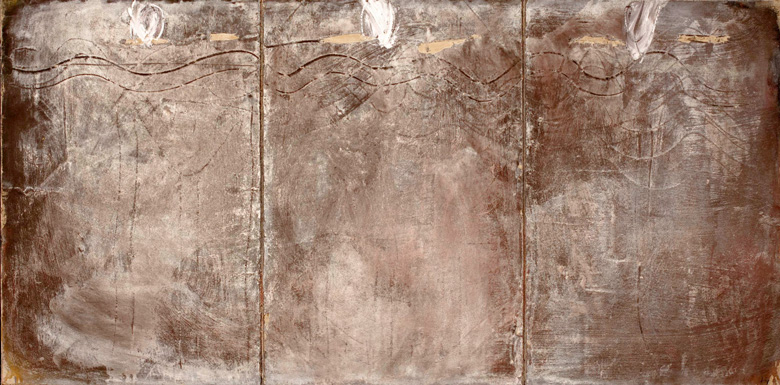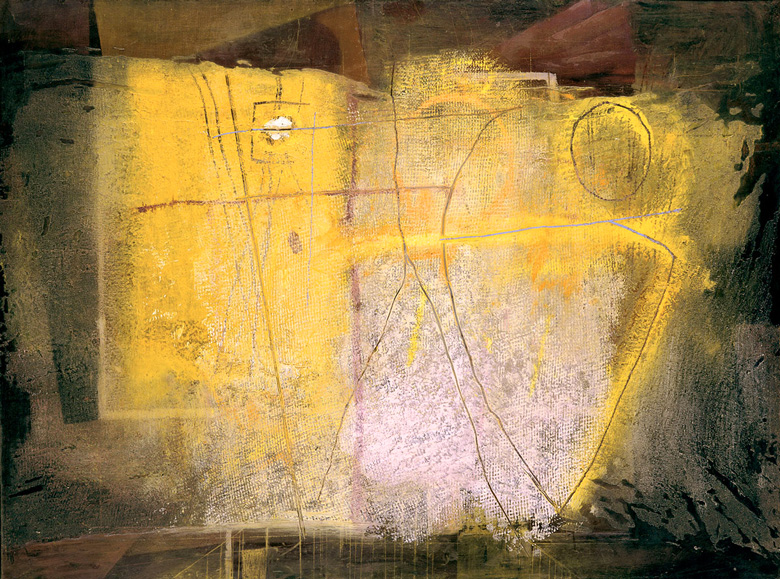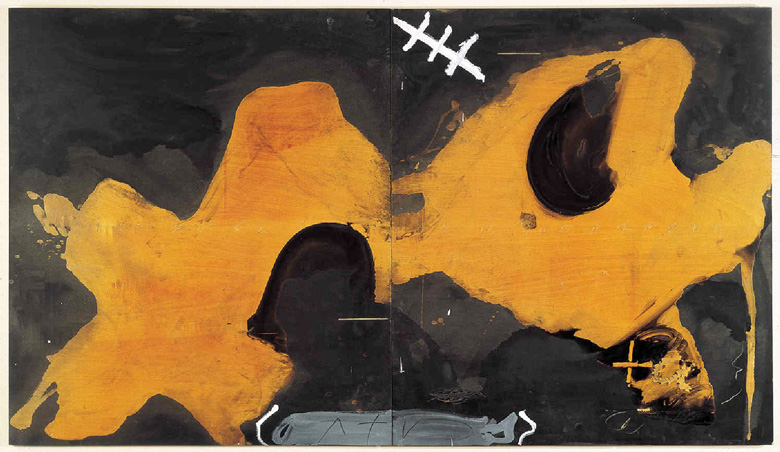Tàpies, centenary of a great genius
The celebration of his centenary tries to claim that the Catalan Antoni Tàpies is a figure as relevant today as at the time when he created his works. This only happens with great artists, that’s why they are universal and timeless.
Antoni Tàpies, a current classic? Is he still transgressive? How do we look at this genius today?
The great painter of the Abstract Avant-garde, initially influenced by Surrealism and Dadaism, was a central figure in the artistic orbit of the 20th century. Many of the keys that supported his work remain in force.
The “Tàpies year” comes loaded with commemorative events with three crucial points celebrating the Catalan genius:
The great retrospective on the centenary of his birth begins at the Bozar Museum in Brussels. It is his first major exhibition in Belgium with 122 works, brought together as a kick-off to the celebration of the centenary of his birth.
Starting from his first drawings and self-portraits, he shows his “material paintings” from the 50s and the objects or assemblages from the 60s and 70s. He continues with his varnishes from the 80s and concludes the 90s, when Tàpies continued formal and material experimentation that was always at the center of his work.
The exhibition, curated by Manuel Borja-Villel, will then travel to Museo Reina Sofía in Madrid (2023) to finish its journey in Barcelona, at the Tàpies Foundation (2024).
The Reina Sofía museum hosts the retrospective “Infinito Tàpies” on the occasion of the centenary of his birth. The exhibition opens on February 20 in Madrid and is the highlight of a program punctuated by cultural initiatives that claim its validity.
The Fundació Antoni Tàpies in Barcelona presents several exhibitions to commemorate an entire year dedicated to the painter. The first “Tàpies · The imprint of Zen”, with fifteen unpublished pieces, never exhibited. It shows us the influence of Eastern philosophies, especially Zen Buddhism, on the work of the Catalan painter.
The next one, with an enigmatic title is “A=A, B=B”, inspired by the evolution of scientific thought. There is a kind of dynamic, universally established in the art world, that is difficult to escape. It means that artists, with very few exceptions, can only be fairly recognised after several years, and even decades, have passed since their death.

Tàpies is an artist who breaks with the idea of the canvas as something that represents the landscape. He creates abstract landscapes, where thought and matter are not separated. His work has a series of elements that are repeated, but each time they are different: the cross, the circle, the spiral…
This means that he creates a production where the important thing is not fixed ideas, but flow, movement.
As if time were the necessary and indisputable defender of the quality of the creative discourse of the works. Despite having been in many ways ahead of his time – or precisely because of that – Antoni Tápies (Barcelona, 1923-2012) is within that category.
Tàpies was highly recognised while he was alive (he died in 2012), both at market level and with exhibitions. But it usually happens that when a figure disappears, a few years pass until we realise that we cannot leave him behind because it is part of the collective memory.
We need to put it back at the center of the debates according to Imma Prieto, Director of the Foundation in Barcelona. However, far from wallowing in what he was, it is about laying the foundations for what the artist’s legacy should aspire to be.

The centenary is planned, not only to honor a past, but, above all, to open us to a future. That is, thinking about the world we live in through his work.
One of the exhibitions, inspired by the East, is “Tàpies. The imprint of Zen” curated by Núria Homs.
Another, based on the science “A=A, B=B” is organized by Pep Vidal. His starting point is the book “The New Vision of the World” (1954) that Tàpies kept on his nightstand since his youth. It included dialogues on science and philosophy in the 1950s in Sankt Gallen (Switzerland).
The Tapies Foundation celebrates the centenary with other activities throughout the year, such as concerts by Raimon, Jordi Savall and Marina Harlop.
100 years after the birth of Antoni Tàpies in Barcelona (December 13, 1923) and 11 years after his death (February 8, 2012), questions arise:
How has his work transcended the history of Contemporary Art? What is his influence in current artistic trends?
Without a doubt, contemporary art owes a lot to Tàpies, on many levels.
Apart from his extensive work, Tàpies created and promoted his own Foundation, which was and is an important platform for understanding Contemporary Art.
Many young artists have been educated by watching the exhibitions that have been presented in Barcelona.
For the previous generation, Tàpies was the emblem of Spanish artistic modernity, the maximum exponent of what could be designated as Avant-garde in Spain.
No one better than him exemplified the aesthetic renewal that was forged under Franco’s regime. His plastic universe constituted that perimeter of “comfortable transgression”, where the imagination of so many art professionals matured.
Shortly before his death, the then Director of the Reina Sofía, Borja-Villel, chose him as one of the ten most influential living artists.
But, after a decade without him, the question about his historical destiny becomes more necessary than ever.
Does Tàpies continue to be a presence for the new trends in Spanish art?

In reality, there is a considerable gap between the post-war generation of artists – including Tàpies – and the new artistic currents. It can be stated that the Catalan artist functions more as a tradition than as a model of transgression for the new protagonists of art.
The very wide variety of creation in the current panorama no longer refers to the aesthetic paradigms of informalism, but, rather, to the reworking of the new canons generated by Postmodernism.
Tàpies becomes an exceptional case study for that “archaeology of freedom” that delves into the lost horizon of Modernity. Perhaps, this circumstance should not be viewed in negative terms if we stick to the author’s own will.
As he himself said,
“I aspire to be part, one day, of the authority of tradition.”
For him, the idea of tradition was articulated in the form of transformations, art being a vehicle in continuous evolution.
One of the great battlehorses that occupied Tàpies in his last period was the challenge of naturalism and the strategy of seizing the meaning of tradition. In his own words, he said:
“It is grotesque how traditional academics continue to call themselves guardians of tradition.”
Tàpies and the war of factions: Abstraction against Realism
The crusade against Realism made him a prominent protagonist of the controversy that, in 1993, electrified the Spanish art scene with the anthological exhibition that the Reina Sofía Museum dedicated to the hyper-realist Antonio López.
For Tàpies, abstraction determined a point of no return that made the slightest flirtation with figuration impossible.
There are few artists who consider an existentialist and antagonistic competition between Abstraction and Figuration.
The new generations travel through both territories with a naturalness that exorcises old grudges between both sides.
Some of the core features of his work still offer valid alternatives for new generations.
It is necessary to go back to 1953-1954, when, in Barcelona, after his interesting magic period linked to the Dau al Set group, he made his first material paintings.
Under the influence of the photographs of Brassaï, and of painters such as Dubuffet and Faurtrier, he began to mix colours with earth, marble dust and glue.
The idea of a wall began to acquire a materiality that was reminiscent of his years of confinement during the Civil War, where the walls delimited the narrow space in which his existence took place.
Tàpies and the paths of silence
Unlike Jackson Pollock‘s “Action painting“, what we see in Tàpies‘ works are not the marks of action, but the traces of contemplation.
He is known for his interest in Far Eastern culture and, more specifically, in Zen philosophy.
Tàpies turned to Eastern philosophy as a way to resolve the conflict he experienced as a child, between an anticlerical father and a Catholic mother.
The contemplative, in his works, is the foundation of his aesthetic and discursive architecture. His works determine paths of silence that lead to nowhere. And, in this sense, in a context like the current one, characterised by extreme verbiage, maddening noise and perverse semantics, his “monument to silence” erected, for almost six decades, is revealed as an oasis of meditation.

Marina Abramovic wanted to offer New Yorkers, her work “Ocean View” (2002), a space for rest and silence that would heal them from the traumatic episodes of 9/11. Tàpies also, from the first half of the 1950s, proposed an alternative itinerary for noisy modernity that, to this day, remains in force.
Despite his distance in time, some of his approaches can be reinterpreted today because his work has a power of silence worthy of continuing to be studied.
The best tradition is one where you can always relearn. In the case of Tàpies it is a paradigm.
After his death, many voices raised warning signals about the stagnation of prices for his works. In 2014, the Catalan artist broke all records for his work when one of his works was auctioned at Christie‘s for 2.8 million euros.
The level reached by the bid was surprising and since then, this figure has not been reached again.
Curiously, in the economic valuation of Tàpies‘s work there is a powerful dissymmetry between the works belonging to the two decades, the 50s and 60s, and other later ones made after 1980.
The former show a million-dollar price and a profile stable and even rising.
On the other hand, his later works rarely exceed 500,000 euros but interest remains. They are all sold.
A self-taught artist during the interwar period, Tápies reflected on the human condition, his historical situation and artistic practice, especially on the limits and contradictions of painting. His work, very prolific, is distributed in museums around the world.
The spiritual dimension that silence reaches in his works returns today with a revolutionary and countercultural force intact and susceptible to being vindicated.
Tàpies gave his painting an essentiality that can only be explained by his desire to strip it of everything. From the dialectic of the thickening and erosion of his canvas, only traces remain… traces of words and thoughts, which, ultimately, draw the profile of silence in his art.
- Reina Sofia Museum, Madrid, from 20 February 2023.
- Tàpies Foundation, Barcelona, 2024
